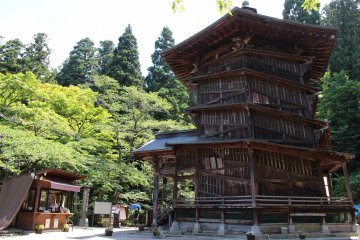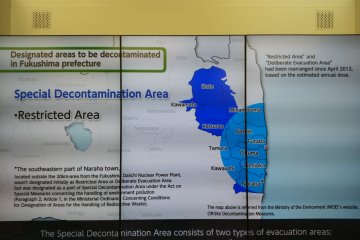The Great East Japan Earthquake and Tsunami of 2011 was a devastating event. It damaged the Daiichi Nuclear Power Plant and triggered the release of radioactive materials, which affected the surrounding regions within thirty kilometers of the plant. The fear of exposure to radioactivity or intake of it through food, water and air has haunted the Japanese even outside of Fukushima Prefecture. The Decontamination Information Center was thus set up as an important step to educate local citizens on the background of nuclear radioactivity and the reactive measures taken by the government to monitor and prevent further contamination. One of the goals is to ultimately help rebuild people’s confidence in living in Fukushima Prefecture and to act as a guidance or record of the recovery work in both the past and the future.
The facility occupies only a small space on the ground floor of an office building, which is a five-minute walk from the east gate of Fukushima station. Many English materials are available. The first three videos with English subtitles explain the incident of the Daiichi Power Plant and its impact. It explains how long it would take for the radioactivity level to return to normal. It also shows the different protective actions that have been carried out so far. Other preventive measures and cooperative efforts between the government and the public are explained.
There is not an overwhelming amount of exhibits as in ordinary museums, but by no means is there a lack of information for visitors. Different types of resources and findings are categorized and edited into booklets, information sheets, charts and brochures. Among others, background information on nuclear power, measurement of radioactivity, food safety, purification of water, nuclear waste treatment, and the detailed situation of different towns and cities within the prefecture are all available. Information about the status of different localities is updated and written on a big whiteboard for visitors to follow.
There are also some models explaining the installations for storing nuclear waste. You can touch the sample material used for its construction. Other models illustrate the radioactivity of different materials we are normally exposed to. These help those who do not like to read that much to understand in a simple and clear way.
At the back of the exhibition there are pictures from social events and communal projects that aim at encouraging the local society. It should be expected that not just hardware is urgently needed for recovery. People’s trust among themselves and their willingness to help each other go through hardships is also indispensable.











